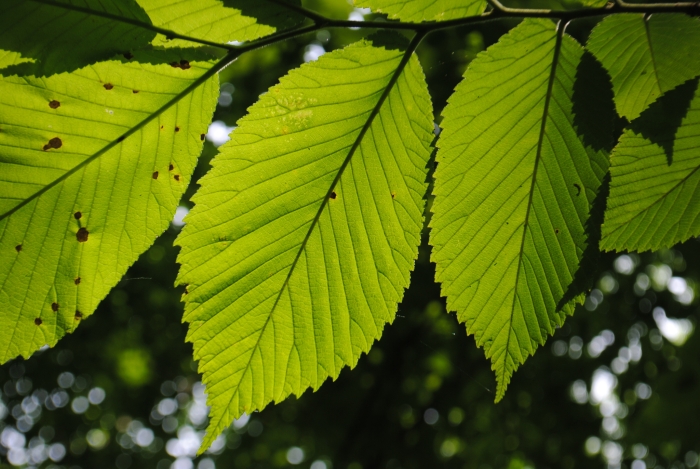Slippery Elm
(Ulmus rubra)
Slippery Elm (Ulmus rubra)
/
/

Zihao Wang
CC BY 4.0
Image By:
Zihao Wang
Recorded By:
Copyright:
CC BY 4.0
Copyright Notice:
Photo by: Zihao Wang | License Type: CC BY 4.0 | License URL: http://creativecommons.org/licenses/by/4.0/ | Rights Holder: Zihao Wang | Publisher: iNaturalist | Date Created: 2018-06-09T12:31:54-07:00 |





















































Estimated Native Range
Summary
Ulmus rubra, commonly known as Slippery Elm, is a medium-sized deciduous tree with a spreading canopy, typically growing to 12–19 m (39–62 ft) in height. It is native to eastern North America, found in a variety of habitats including moist bottomlands, riverbanks, and upland forests, often thriving in well-drained soils. The tree’s heartwood is reddish-brown, which is reflected in its alternative common name ’red elm’. Slippery Elm is easily distinguished from American elm by its downy twigs and chestnut brown or reddish hairy buds. Its leaves emerge with a red tinge, mature to dark green in summer, and turn to a dull yellow in the fall. The perfect, apetalous, wind-pollinated flowers appear before the leaves in early spring, in tight clusters. The reddish-brown fruit is an oval winged samara, with a single, central seed.
Slippery Elm is valued for its inner bark, which has medicinal properties, particularly as a demulcent. It is also used for reforestation and wildlife habitat enhancement due to its high water requirements and adaptability to various soil drainage conditions. In cultivation, it prefers full sun but can tolerate part shade. It is not commonly used in urban planting due to its size and the potential for disease, including Dutch elm disease and elm leaf beetle infestations. Care should be taken when planting Slippery Elm, as it can be potentially invasive outside its native range.CC BY-SA 4.0
Slippery Elm is valued for its inner bark, which has medicinal properties, particularly as a demulcent. It is also used for reforestation and wildlife habitat enhancement due to its high water requirements and adaptability to various soil drainage conditions. In cultivation, it prefers full sun but can tolerate part shade. It is not commonly used in urban planting due to its size and the potential for disease, including Dutch elm disease and elm leaf beetle infestations. Care should be taken when planting Slippery Elm, as it can be potentially invasive outside its native range.CC BY-SA 4.0
Plant Description
- Plant Type: Tree
- Height: 40-60 feet
- Width: 30-50 feet
- Growth Rate: Moderate
- Flower Color: N/A
- Flowering Season: Spring
- Leaf Retention: Deciduous
Growth Requirements
- Sun: Full Sun, Part Shade
- Water: Medium
- Drainage: Fast, Medium, Slow
Common Uses
Bee Garden, Bird Garden, Butterfly Garden, Deer Resistant, Drought Tolerant, Erosion Control, Rabbit Resistant
Natural Habitat
Native to moist bottomlands, riverbanks, and upland forests in eastern North America
Other Names
Common Names: Red Elm, Gray Elm, Soft Elm, Moose Elm, Indian Elm, Rotulme, Orme Rouge, Orme Gras, Rödalm
Scientific Names: , Ulmus rubra, Ulmus fulva, Ulmus pendula, Ulmus pubescens, Ulmus crispa, Ulmus americana var. rubra, Ulmus dimidiata, Ulmus pinguis, Ulmus rubra f. laevis
GBIF Accepted Name: Ulmus rubra Muhl.